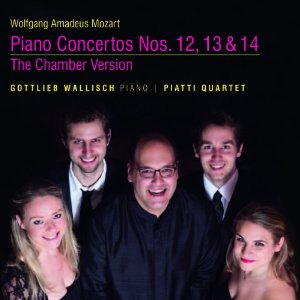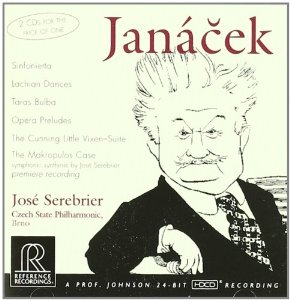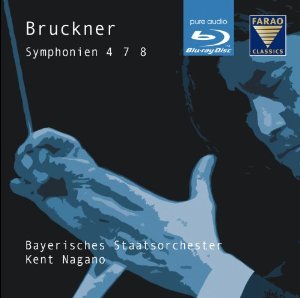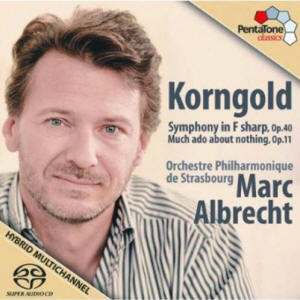You are reading the older HTML site
Positive
Feedback ISSUE 74
The Future is Here - Audio Still Rules
Blu-ray recordings may be video, audio or most commonly video plus audio. If the video is a distraction turn it off though I would suggest watching the video at least once; at times it can be interesting or entertaining. Naxos is again following up with more high definition (Blu-ray) audio only releases. For many listeners that will be a distinct improvement in audio quality if the HDMI digital output signal is used instead of the analog. That one cable carries everything including stereo or multi-channel audio in addition to the very high quality Blu-ray video signal. Greater clarity and a smoother treble will be noticed with many if not most home audio systems. So far this seems to be consistently true. Easier connection needing only one cable is appreciated by all. Sometimes new-fangled things are even easier to use while offering better quality, at least in the audio musical field. An easy way to get into the beauty and audio and video qualities of Blu-ray releases is by getting a truly good player (a good start is important with many things in this old world). In this issue I will use the moderately priced and recently acquired Oppo BDP-105 player for all the Blu-ray reviews. It seems to be an over performing universal player; other players may be used for SACD recordings. Next item needed would be a very decent AV receiver such as by Onkyo, Integra, Denon and others that have multiple HDMI cable inputs and good digital or digital to analog connections and jump right in. Your newer television sets will have the correct and simple HDMI connections for simplified setup. The AV receiver will let you add surround sound easily. Remember that quality is more important than quantity in the long run. If possible, try to get an AV receiver that has an official manufacturers' list price of $1200 or even a bit more, particularly if you like to listen at fairly loud levels at times and with multichannel connected. Note, this may be changing as manufacturers realize that most listeners do not need high power in all channels and now are experimenting with less power to the multi or surround channels. I am using a couple of examples in this review. If you like "an in the theater" atmosphere or feeling, multichannel will be necessary now or later. In Issue 60, I went into some detail about why I have now chosen the Nola loudspeakers, namely the Boxers (for right and left front channels) and the specifically designed Announcer model for the very important center channel to use for the all important front trio in these and continuing reviews. Yes, you may have heard that all three would ideally be the same. That is not necessarily true; here both models are, the same, in that each uses the same drivers/cones in a different designed cabinet for an even slightly better sounding center channel. As many have found out, center channels can be of extreme importance to many listeners; that is where singers live as do news reporters. In this very competitive price range, models are offered by Paradigm, PSB, Definitive Technology and others. As before, a right and left pair of Nola Thunder Bolt II subwoofers complement the front channels for even deeper and more palpable bass range desired by some listeners. Notice the generally favorable brief revues I write each issue? There are logical reasons for that to happen. Changes such as digital and HDMI connections have made pretty darn good audio to be easier for the manufacturers to give us and easier for us to put to use. Same is true for the video portion that we pretty well take for granted here. As you purchase and use some of my suggested performances you may notice that relatively unknown sources and performers are often doing a superb job and why not! Unlike many of the big professional outfits and famous performers they can and possibly do practice for many months on end, repeating the same music or performances. That can be the way for an individual, or group, chorus or orchestra to be discovered by being on these well done Blu-ray recordings! Pay attention, watch and listen to the possible stars of the near future in the comfort of your own listening and viewing room.
Mozart Piano Concertos Nos. 12, 13 & 14. The Chamber Version by Piatti Quartet. Pianist: Gottlieb Wallisch. In addition to Mozart's great piano concertos of the years 1784-17-87 there is a group of slightly unusual and very popular concertos all completed in 1783. They were written for Mozart himself to perform as part of his subscription concerts in Vienna. Yes, he not only wrote these piano concertos he needed to perform them in order to make money. He did a flexible orchestration and one was for full orchestra and another for accompaniment of a string quartet. The string quartet version is rarely heard and is known for the intricacies of string writing encouraging interaction among the five musicians. Quoting from a letter to his father Mozart wrote the following: "These concertos are a happy medium between too easy and too difficult. They are very brilliant, pleasant to the ear and natural without being vapid. There are particular passages from which connoisseurs along can derive satisfaction but still the less learned cannot. I believe fail to be pleased, even without knowing why… to gain applause, one must write things so inane that they might be played on barrel-organs or so unintelligible that no rational being can comprehend them though on that very account they are likely to please." Listening to this group of three Mozart concertos was a real pleasure. Overall audio quality was simply outstandingly excellent. I used my newly acquired Oppo BDP-105 player instead of my usual Music Technology fully updated version of that unique original SACD playing the SCD-1. Yes that seemingly overbuilt original Sony heavy weight champion player reveals a problem with the unique CD/SACD switching mechanism that does not hold up like the twenty to thirty years for the player itself. The Allen Write ultimate upgrades attracted many of us decades ago (seemingly more recent) and the mechanism to change from CD to SACD automatically evidently was not built with a twenty or more years' life span of the basic payer. Parts become scarce to find when we reach the nearly quarter of a century mark. In any event, I must report that the Linn Recording played on the new Oppo player would be tough to equal and perhaps not to be surpassed. Time will tell. Great clarity with a sense of natural ease was the result with this Linn SACD recording. A top recommendation is easily earned for this release.
Leos Janacek (Disc 1). Sinfonietta. Lachian Dances. Taras Bulba. Cunning Little Vixen-Suite. From the House of the Dead. The Makropulos Case. Orchestra: Czech Philharmonic. Conductor: Jose Serebrier. Reference Recordings 2 RR-2103. Recordings on Disc 1: 1. Sinfonietta: Fanfares, 2. Sinfonietta: The Castle, 3. Sinfonietta: The Queen's Monastery, 4. Sinfonietta: The Street, 5. Sinfonietta: The Town, 6. Lachian Dances: Starodávný I, 7. Lachian Dances: Po?ehnaný, 8. Lachian Dances: Dymák, 9. Lachian Dances: Strarodávný, 11. Lachian Dances: Pilky, 12. Taras Bulba: The Death Of Andrei This release is evidently an updated release from some time ago. The selections are very interesting and upbeat for the most part. The audio quality is simply excellent as usual with Reference Recordings. The Sinfonietta is generally regarded as Janacek's finest composition. It certainly is nationalist in inspiration. As written it is always identified with the City of Brno. In Janacek's words and thinking the Sinfonietta stands as an image of a "free contemporary man of spiritual joy and beauty and willing to fight for victory." It was originally dedicated to the Czechoslovak armed forces and Janacek spoke of it as his "Military Sinfonietta." Instrumentation is definitely heavy weight. The opening is designated as "Fanfares." It can be a real workout for listeners' audio systems with fourteen trumpets including two bass trumpets. As a "late bloomer" his later efforts came after he was 60, including this powerful piece.
Leos Janacek (Disc 2). The Cunning Little Vixen – Suite II. Jealousy. From the House of the Dead. The Makropulos Case. Reference Recordings 2 RR-2103. Recordings on Disc 2: 1 The Cunning Little Vixen-Suite, Part 1 and Part 2, 2. Jealousy. 3. From the House of Dead, 4. The Makropulos Case. Act 1, II, and III Being a "late bloomer" is actually even more than would be expected. The reviewed outstanding Sinfonietta and the great Glagolitic Mass were composed after the age of seventy years. His acceptance as an outstanding composer was started in his fifties and came in the realm of opera. The Makropulos Case (Makropulos Affair), was a variant on the famous Faust themes. A young woman is granted a 300 year extension of life. She lived it to its full extent though eventually she comes to the conclusion that such longevity divests life of its meaning. Only those aware of their mortality really find value in what life has to offer. This recording has the world premier of a new orchestral suite from the opera, written by Jose Serebrier. There is a great deal of fine and interesting music in the two discs that includes the very interesting music from The Cunning Little Vixen-Suite. This two disc set is simply top notch in most ways and ultimately very satisfying. It earns a top recommendation from me. Overall audio quality is excellent with some strong passages featuring solid bass response. The orchestral playing is not to be faulted and the musical phrases are very good and interesting. Simply a fine overall recording and better than most. It deserves to be given a fair listening trial, and a chance to become a new release for your listening pleasure.
Bruckner. Symphonies No. 4,7 and 8. Symphony No. 4" (Romantic). (Audio Only) Blu-ray Disc FARAOA 108076. Orchestra: Bayerisches Staatsorchester. Conductor: Kent Nagano Bruckner is still not quite as popular as some other composers. Perhaps that is why this release is all on one Blu-ray disc and features only some of Bruckner's best compositions. The well-known fourth symphony is still usually referred to as "The Romantic" symphony. I would respectfully suggest that you start by listening mainly to that number four and then branch out to the others on the disc. Two or three listening sessions should do it. Somehow you will find that Bruckner's serious symphonic music is slightly different than most other composers' music. The recorded sound is just fine and helps the appeal to listeners of Bruckner's composition. Open your mind and give it a real listening chance. Yes it has to be recommended as it is good though a bit different.
Eric Wolfgang Korngold. Symphony in F Sharp Op. 40. Much Ado about nothing – Incidental Music. Orchestra: Philharmonique of Strasbourg. Conductor Mark Albrecht I must give high marks to this fine recording of music that is definitely a bit different in an entertaining way. It is very upbeat and simply entertaining. Korngold can compose almost any kind of music and was often called upon to do just that as he was one of the greatest film composers of all time. There is definitely entertaining in this unique symphony. It is simply fun to listen to and to try to visualize what might be going on. The hybrid SACD recording is about as good as recordings ever get; you will listen closely. An easy to recommend as ever, in all respects. Good listening.
|





